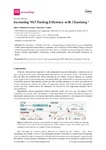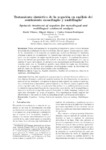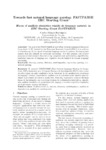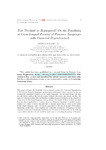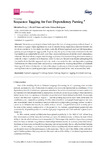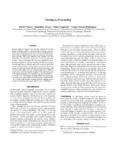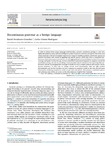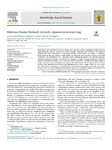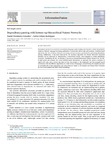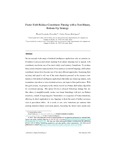Buscar
Mostrando ítems 1-10 de 13
Increasing NLP Parsing Efficiency with Chunking
(M D P I AG, 2018-09-19)
[Abstract] We introduce a “Chunk-and-Pass” parsing technique influenced by a psycholinguistic model, where linguistic information is processed not word-by-word but rather in larger chunks of words. We present preliminary ...
Tratamiento sintáctico de la negación en análisis del sentimiento monolingüe y multilingüe
(2017-09-19)
[Abstract] Dealing with negation in a proper way is a relevant factor in order to obtain high performance sentiment analysis systems. In this framework, we present a method for the treatment of negation in Spanish that ...
Towards fast natural language parsing: FASTPARSE ERC Starting Grant
(Sociedad Española para el Procesamiento del Lenguaje Natural (SEPLN), 2017-09)
[Abstract:] The goal of the FASTPARSE project (Fast Natural Language Parsing for
Large-Scale NLP), funded by the European Research Council (ERC), is to achieve
a breakthrough in the speed of natural language syntactic ...
New Treebank or Repurposed? On the Feasibility of Cross-Lingual Parsing of Romance Languages with Universal Dependencies
(Cambridge University Press, 2018-01)
[Abstract] This paper addresses the feasibility of cross-lingual parsing with Universal Dependencies (UD) between Romance languages, analyzing its performance when compared to the use of manually annotated resources of the ...
Sequence Tagging for Fast Dependency Parsing
(2019)
[Abstract]
Dependency parsing has been built upon the idea of using parsing methods based on shift-reduce or graph-based algorithms in order to identify binary dependency relations between the words in a sentence. In this ...
Parsing as Pretraining
(2020)
[Abstract] Recent analyses suggest that encoders pretrained for language
modeling capture certain morpho-syntactic structure.
However, probing frameworks for word vectors still do not report
results on standard setups ...
Discontinuous grammar as a foreign language
(Elsevier, 2023-03)
[Abstract] In order to achieve deep natural language understanding, syntactic constituent parsing is a vital step, highly demanded by many artificial intelligence systems to process both text and speech. One of the most ...
Multitask Pointer Network for Multi-Representational Parsing
(Elsevier, 2022-01-25)
[Abstract] Dependency and constituent trees are widely used by many artificial intelligence applications for representing the syntactic structure of human languages. Typically, these structures are separately produced by ...
Dependency parsing with bottom-up Hierarchical Pointer Networks
(Elsevier, 2023-03)
[Abstract] Dependency parsing is a crucial step towards deep language understanding and, therefore, widely demanded by numerous Natural Language Processing applications. In particular, left-to-right and top-down transition-based ...
Faster shift-reduce constituent parsing with a non-binary, bottom-up strategy
(Elsevier B.V., 2019-10)
[Absctract]: An increasingly wide range of artificial intelligence applications rely on syntactic information to process and extract meaning from natural language text or speech, with constituent trees being one of the ...


